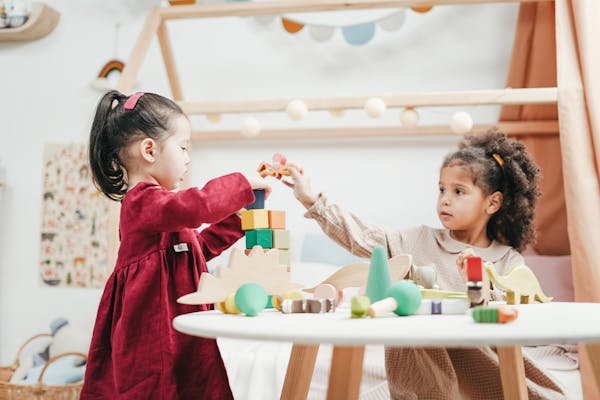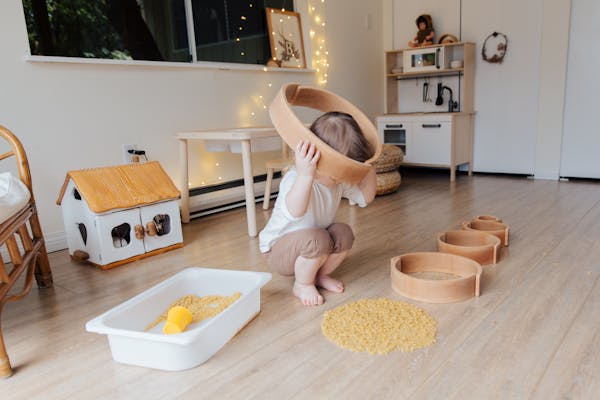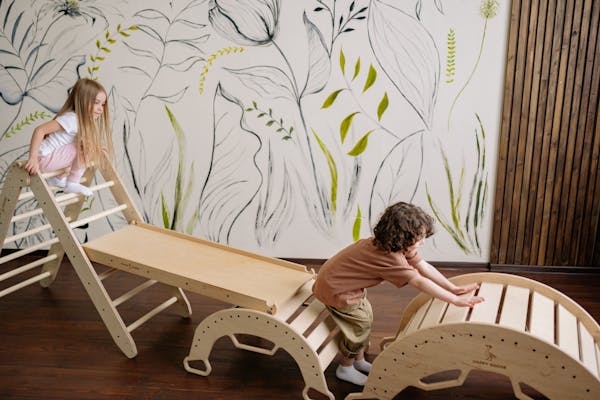Establishing a lively and engaging play area for kids is crucial to developing their creativity and imagination. A thoughtfully planned play area can promote socialization, learning, and exploration while giving kids a secure space to express themselves. There are many ways to create a playroom that sparks a child’s imagination and keeps them occupied for hours on end, from vibrant decor to interactive play areas. Parents and other caregivers can create a playroom where children can flourish and learn valuable skills that will help them throughout their lives by knowing the essential elements of a successful playroom.
Stimulating the Senses
Adding elements that appeal to the senses is one of the most important components of a successful playroom design. Adorable hues, lively patterns, and imaginative décor have the power to captivate a child’s interest and stimulate their creativity. To create an environment that stimulates the senses and inspires creativity, try incorporating vivid area rugs, bold wallpaper, and colorful furniture. Incorporating natural elements like potted plants, artwork with a natural theme, and organic materials like bamboo furniture and wooden toys can also help to create a peaceful environment that inspires creativity and exploration. Offering a range of materials and textures helps kids develop critical sensory processing abilities and engage their senses, all while supporting cognitive growth and fine motor development.
Designated Zones for Diverse Play Experiences
Designating areas for various forms of play is a crucial component of a well-thought-out playroom. You can make sure that kids have opportunities to participate in a range of activities that suit their interests and developmental needs by segmenting the space into areas for quiet activities, active play, and imaginative play. A designated art area with easels, paints, and other creative supplies can encourage aspiring artists to unleash their creativity, while a comfortable reading nook filled with books and soft pillows can offer a peaceful haven for kids who need a break from active play. Parents and other adults who care for children can foster social interaction and cooperative play in addition to helping children gain a sense of autonomy and independence by setting up separate play areas.
Hands-On Exploration: Encouraging Open-Ended Play
It is imperative to incorporate opportunities for interactive play and exploration alongside visual elements. Including sensory activities like water and sand tables, sensory bins with various textures, and art supplies can give kids the chance to play freely and express themselves artistically. Offering a range of materials and textures helps kids develop critical sensory processing abilities and engage their senses, all while supporting cognitive growth and fine motor development. Incorporating useful Montessori toys for babies that will boost their development, together with interactive components like puzzles, building blocks, and manipulative toys, promotes creativity and imagination in addition to problem-solving and critical thinking abilities.
Nurturing Imaginative Play
Creative play spaces, like a pretend kitchen or a dress-up area, can inspire kids to act out scenarios and tell stories with their imaginations. Giving kids costumes, accessories, and props can improve their playtime and help them fully enter their fantasy worlds. In addition to letting kids explore their creativity and have fun, parents and other adults can assist kids in developing critical social and emotional skills like empathy, communication, and problem-solving by promoting imaginative play. Children can experiment with various roles and viewpoints through role-playing, which fosters empathy and understanding of others.
Promoting Physical Activity
Incorporating gross motor activities like indoor trampolines, balance beams, and climbing structures can help children who prefer active play get rid of excess energy and develop vital motor skills. Incorporating foam blocks or soft play mats can also lower the risk of injury while fostering a safe environment for active play. Parents and other adults who care for children can help them develop their physical development and boost their self-esteem by giving them opportunities for active play. In addition to keeping kids active and healthy, outdoor play structures like swings, slides, and playhouses can inspire them to explore the great outdoors and cultivate a love of nature.
Bringing the Outdoors Indoors
A sense of connection to the outdoors and environmental awareness can be promoted by incorporating natural elements into the playroom. To create a peaceful and nurturing play space for kids, think about incorporating natural elements like bamboo furniture and wooden toys, as well as potted plants and décor with a nod to nature. Parents and other adults who care for children can foster in them a deeper respect for the environment and a sense of duty to take care of the planet by bringing aspects of the natural world indoors. Play areas with a natural theme can also offer chances for outdoor-themed activities and sensory exploration, which encourage learning and exploration.
Child-Centric Design
And lastly, remember to include your kid in the design process. You can make a playroom that feels like their own unique space by letting them select the furnishings, decor, and playthings that best suit their tastes and hobbies. Motivate them to use their creativity to express themselves through handmade decorations, art projects, and other unique touches that will make the space truly their own. Parents and other caregivers can empower kids to take charge of their play area and develop a sense of pride and ownership in their surroundings by involving them in the design process. Parents and other caregivers can design a playroom that accurately captures their child’s interests and personality by taking into account their suggestions and preferences. This will create an environment where the child feels content, at ease, and motivated to do whatever they feel like doing.
To sum up, creating a playroom that inspires creativity requires careful thought-out planning for the physical space as well as the kinds of materials and activities offered. You can create a space where children can learn, develop, and fully explore their imaginations by including elements that appeal to a variety of interests and play styles, stimulate the senses, and encourage hands-on exploration. Your child can have countless hours of fun and learning in a playroom you design with a little imagination and preparation, laying the groundwork for a lifetime of creativity and discovery.
Emma Joyce is an interior blogger from Sydney who likes to explore different styles and learn about home upgrading. She enjoys exploring new places so reading about the world’s most beautiful places is what gets her going. She hopes she’ll find a great beach house to live in one day. Until then, she likes recreating some of the most amazing coastal interiors.





